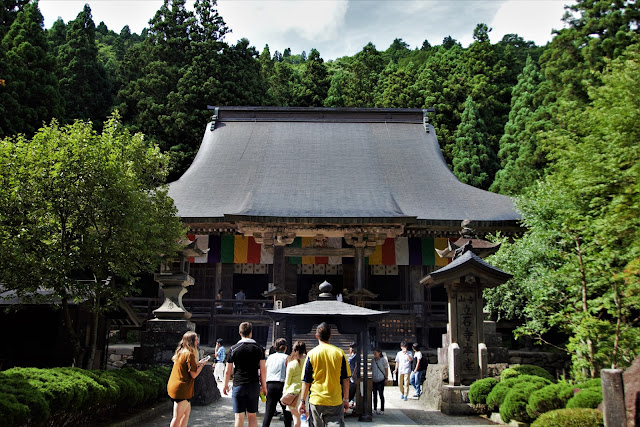Zao Fox Village
The north is pretty far from Gifu, so the first day involved a few stops, the first being at the Zao Fox Village. In Japanese folklore, kitsune are intelligent and magical animals that have the ability to shape shift into humans. Some stories depict them as faithful friends and guardians to humans, but mostly they were said to be tricksters. To avoid being tricked by a cunning and mischievous kitsune, people answer the phone with “Moshi moshi” because supposedly it’s really difficult for foxes to say, so if the person on the other end doesn’t say moshi moshi back, then you know they’re a sneaky fox and aren’t to be trusted!
All the foxes we saw were adorable though, I even played a game with a young one as we chased each other around the enclosure! So now please enjoy these cute pictures of Japanese red foxes!
The soft at heart's who needled a snuggle!
Yamadera
Next up was Yamadera, a thousand year old temple built into the top of a mountain in Yamagata prefecture. You have to climb exactly 1000 stairs through a forest of giant cedar trees, hydrangea bushes, and moss covered lanterns to reach the top. Once you do you are awarded with a beautiful view overlooking a town nestled in the valley below. Yamadera is also famous for being the subject of this famous haiku, composed by Matsuo Bashō, which will probably strike a chord with anyone who has ever had the pleasure of experiencing Japan in the summer!
静けさや
岩にしみ入る
蝉の声
Silence, and penetrating into the rocks — the cry of the cicada
Ginzan Onsen Town
After our hike we were in need of a bath, and what better place to have one then in the beautiful Ginzan onsen town. Ginzan is a quaint little town nestled in the mountains in Yamagata prefecture that consists of only twenty or so wooden buildings
that line a river as it threads its way through a narrow valley. In the evening,
after hotel guests have eaten and bathed, they dress in yukata and geta,
traditional Japanese cotton robes and wooden sandals, and wander around the
town lit by the soft glow of lanterns hanging from each door. It was a magical
site, only somewhat ruined by our regular clothes and the fact that we were about to go to an izakaya to drink beers and then retire to our cosy little motorhome for the night! One day we might stay at one of these fancy hotels though, maybe…

























































